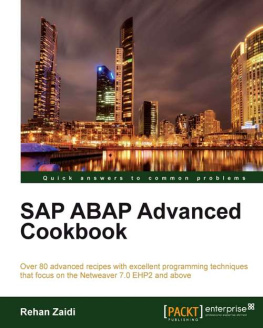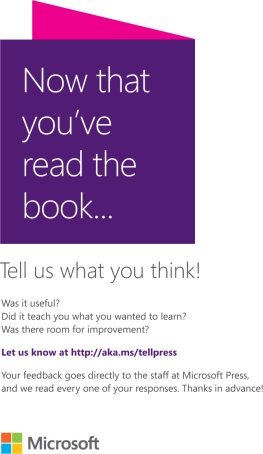| ISBN: | 9-783-9601-2344-6 (ePUB) |
| Editor: | Tracey Duffy |
| Cover Design: | Philip Esch, Martin Munzel |
| Cover Photo: | fotolia #65986517 bluebay2014 |
| Interior Design: | Johann-Christian Hanke |
All rights reserved.
1st Edition 2016, Gleichen
2016 by Espresso Tutorials GmbH
URL: www.espresso-tutorials.com
All rights reserved. Neither this publication nor any part of it may be copied or reproduced in any form or by any means or translated into another language without the prior consent of Espresso Tutorials GmbH, Zum Gelenberg 11, 37130 Gleichen, Germany.
Espresso Tutorials makes no warranties or representations with respects to the content hereof and specifically disclaims any implied warranties of merchantability or fitness for any particular purpose. Espresso Tutorials assumes no responsibility for any errors that may appear in this publication.
Feedback:
We greatly appreciate any kind of feedback you have concerning this book. Please mail us at .
Preface
Due to the wide spread of SAP R/3, the programming language ABAP/ABAP Objects has become almost a standard for business applications.
As a result of the deregulation on the European energy market, IT in utility industries has changed fundamentally in the last 10 years. I have therefore gained a lot of experience in developing applications with ABAP and ABAP/Objects as an employee responsible for the IT of utility companies.
The idea for this book originated from a practice-orientated workshop for the ABAP developers employed by the company I work for. Both beginners and advanced programmers took part in this workshop. Even for the expert developers, time and again subjects which were absolutely new territory arose.
The book Practical Guide to SAP ABAPPart 1 explains the knowledge necessary for working with the Data Dictionary and the ABAP debugger. It demonstrates frequently used methods and procedures in ABAP development based on requirements from practice.
This second part looks at the following aspects: the performance of programs, adjusting the standard SAP application to specific company requirements, authorizations, error analysis and error corrections, SAP Transport Management, and the SAP Service Marketplace.
summarizes the requirements used as examples in Practical Guide to SAP ABAPPart 1. It describes which solutions can be implemented with the methods and procedures explained and which solutions are more complex and thus require further knowledge.
looks at the impact of the developer on the performance of programs. Poorly developed applications cause needlessly long program runtimes. Runtimes can be shortened significantly using efficient programming techniques or by using the Data Dictionary correctly.
SAP R/3 is an application which is used in many large and medium-sized companies. The standard version of this application cannot cover the specific requirements of all companies. therefore explains options for changing or enhancing the standard SAP applications.
Such changes are always necessary to optimize the company-specific procedural organization or the communication with partner companies. Therefore, SAP SE has provided a lot of tools: the Modification Assistant, user exits, special screen enhancements, the Enhancement Framework, and customer includes for enhancing tables and changing standard search helps. This chapter explains all of these technologies with their advantages and disadvantages.
looks at SAP access and account management in the form required by ABAP developers to protect their own developments against unauthorized access.
outlines what lies behind the customizing of SAP applications and indicates how developers can make their own customizing entries.
describes the knowledge of basic SAP technologies that ABAP developers need: the SAP Transport Management System (TMS). Once the developer has finished his work, the development has to go live. This is achieved using transports. Equipped with the explanations about TMS in this chapter, developers will be able to understand the technology of transports, allowing them to intervene and make corrections in the event of errors.
looks at troubleshooting for ABAP programs as well as procedures for correction. Errors in standard SAP programs tend to accumulate at a change of release or when new SAP modules are introduced. It is often the case that the interaction between the very complex SAP applications causes the errors. Due to the complexity and the wide range of installations, it is not possible to test all functions every time there is an update. In this case, the user is the beta tester. Developers have to understand the error messages and have different options for repairing the errors.
provides basic information about the use of the SAP Service Marketplace and the SAP Support Portal it contains. The chapter explains how to do the following: obtain a developer key, obtain an SSCR key for modifications to standard SAP objects, investigate SAP Notes, and create an SAP incident to report errors to SAP SE.
With this practical guide to SAP ABAP, my aim is to provide you with tools, methods, and procedures which you can use to solve a lot of your daily queries. In order to use these methods and procedures successfully in your professional life, you have to add the ability to put yourself in the situation of the user: you will need to fully understand the users requirements and be able to realize solutions with the help of the tools explained in this book.
I make no claim that the information contained in this book is complete. If, based on your own experience, you think that important parts are missing or wrong, please feel free to contact me so that your comments can be considered in a new edition of the book.
Expression of thanks
At this point I would like to thank the many people who have supported me in completing and producing this book.
First of all, my wife Ulla, who has been very patient and understanding, especially when I was distracted and thinking about the next chapter.
Next, Martin Munzel and Jrg Siebert, who put their trust in me and gave me the opportunity to publish this book and share my experience.
My thanks also go to the editors Tracey Duffy and Lisa Jackson who invested a lot of effort and provided important advice in making this English version of the Practical Guide to SAP ABAP understandable. I am also grateful to the employees of Espresso Tutorials, such as Alice Adams and Johann Hanke, who made a great contribution and provided a lot of skill to make this book a professional publication.
And last but not least, the managers of ConUti GmbH, Daniel Heinemann and Marcus Tegetmeyer, who supported me and allowed me the use of an SAP system.
In the text we use boxes to highlight important information. Each box is also equipped with a pictogram:
Tips
 Tips highlight information concerning more details about the subject being described and/or additional background information.
Tips highlight information concerning more details about the subject being described and/or additional background information.
Examples


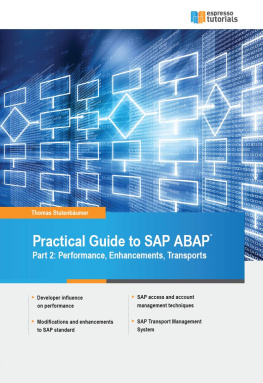
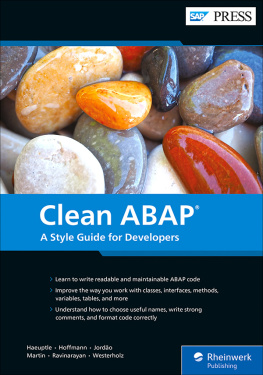
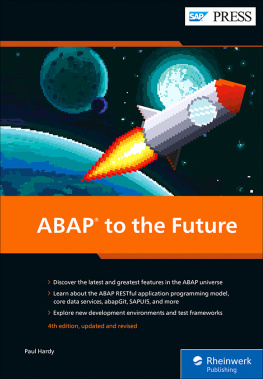
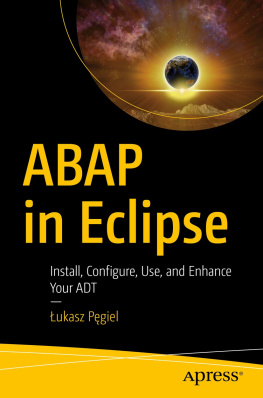
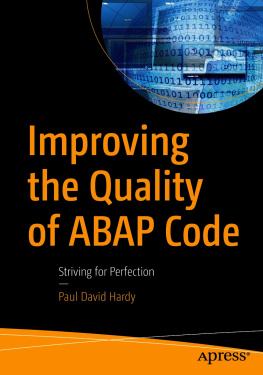

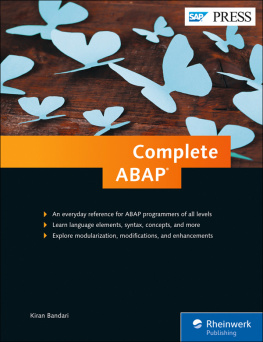
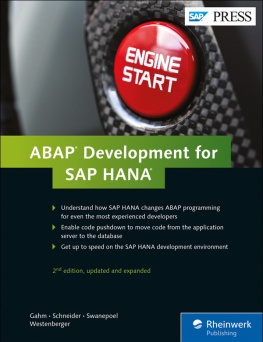
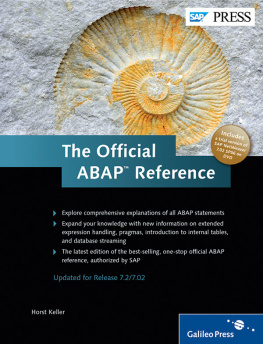

![Rehan Zaidi [Rehan Zaidi] - JavaScript Essentials for SAP ABAP Developers: A Guide to Mobile and Desktop Application Development](/uploads/posts/book/120567/thumbs/rehan-zaidi-rehan-zaidi-javascript-essentials.jpg)
